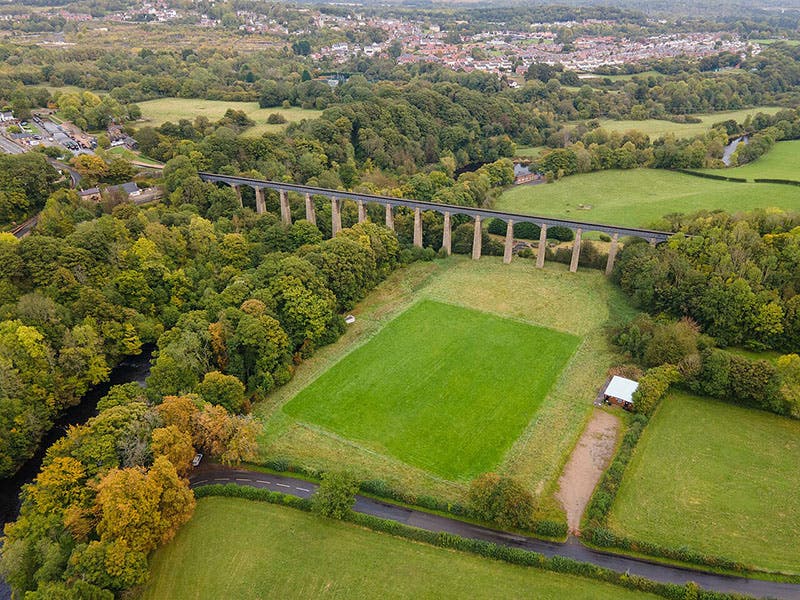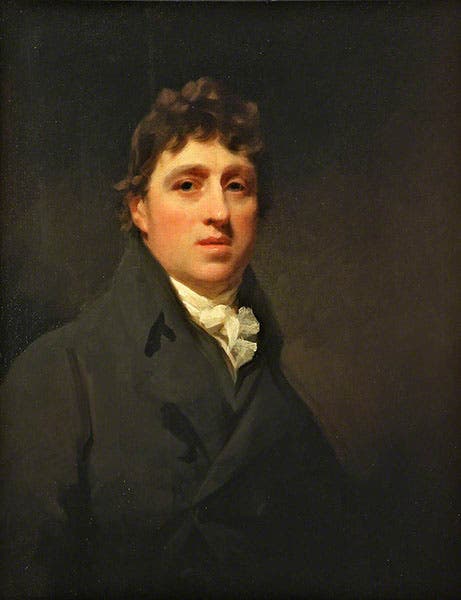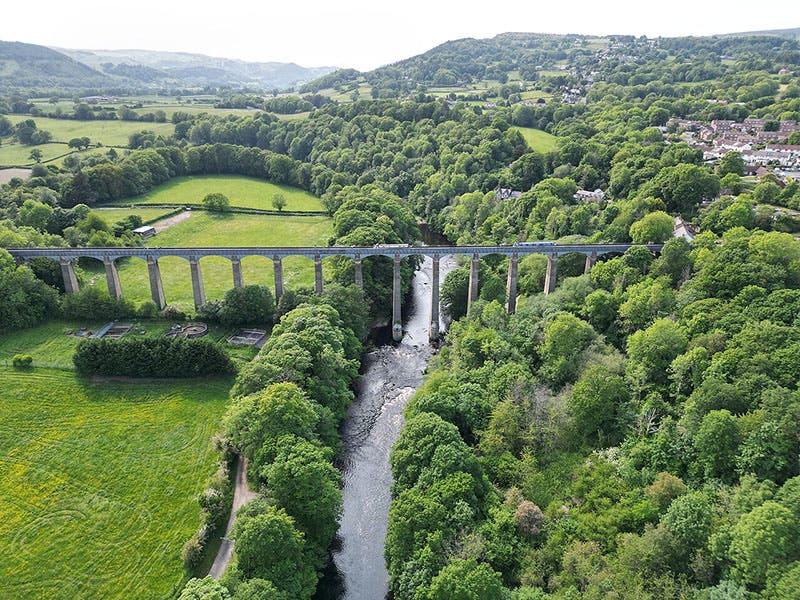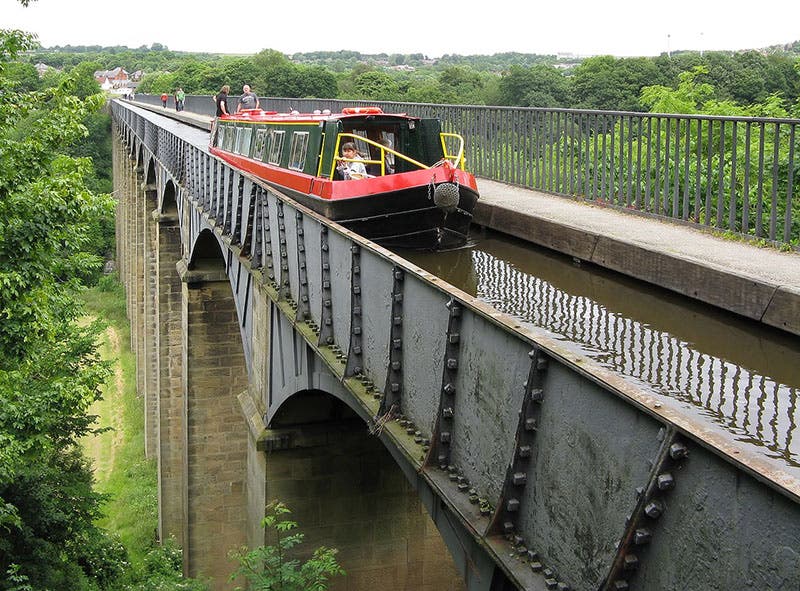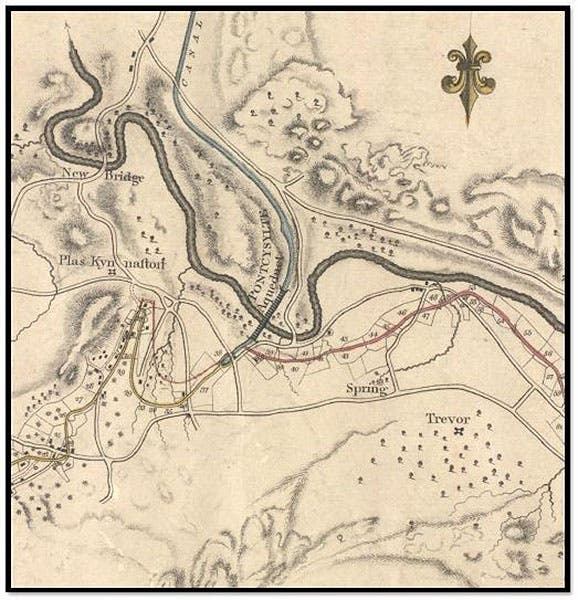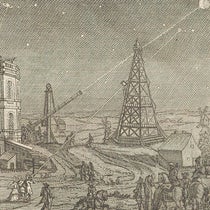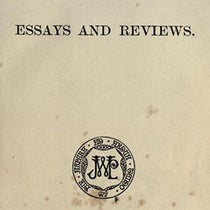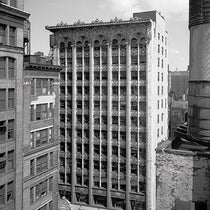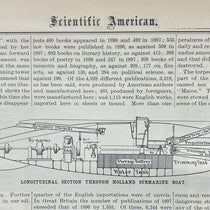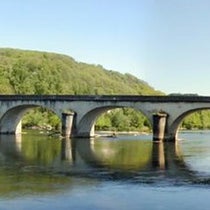Scientist of the Day - Thomas Telford
Thomas Telford, a Scottish civil engineer, was born Aug. 9, 1757, in southern Scotland. He grew up to become one of Great Britain’s most distinguished engineers, perhaps most celebrated for building England's first suspension bridge over the Menai Strait that separates England from Anglesey. We wrote a post on Telford 8 years ago, and told the story of the Menai Bridge, as best we could in a few paragraphs, where you can also see photographs and engravings of this loveliest of bridges.
Today we go back to Telford’s earlier career and another celebrated structure, this one not quite so majestic, but just as awe-inspiring: the Pontcysyllte Aqueduct (pronounced 'pont-ker-suth-tee'). But first, a little more background about Telford. He was born and raised in poverty, his father having died when he was very young. He was apprenticed to a stone-mason, worked on bridge building, moved to London, showed his talent for bridge design, and before long had a patron. In 1787, this patronage snared him an appointment as the Surveyor of Public Works for Shropshire, a county in western England that abuts Wales. Telford reconstructed existing buildings (such as Shrewsbury Castle) and built bridges – over three dozen of them, many of them using cast iron, which was a recent introduction to the repertoire of bridge builders. The famous Iron Bridge over the River Severn in Shropshire, which was the world’s first cast-iron bridge, had been completed only a few years earlier in 1781 (see our post on Abraham Darby III). Telford learned from Iron Bridge and realized that iron bridges could be much less massive and still support considerable loads. He also learned how to gracefully combine masonry piers with structural iron. The Menai Bridge would be the culmination of these acquired skills.
In 1793, Telford was put in charge of the Ellesmere Canal project, which proposed to build an inland waterway from Shrewsbury on the River Severn north to the River Mersey at Liverpool, and connect England's iron-making facilities in Shropshire with the manufacturing centers in Liverpool and the Midlands. The Ellesmere Canal was never finished, since the consortium ran out of funds, so it never reached either Chester (near Liverpool) or Shrewsbury, and eventually its parts were incorporated into other canal systems, such as the Chester Canal. But Telford did complete a stretch in the middle, where the River Dee wanders in from Wales on its way to the north, and this section included a marvelous aqueduct that carries the canal over the River Dee. He started by erecting slender stone piers, 116 feet tall, above the river valley, placed 52 feet apart. On these he set a 1000-foot-long iron trough, cast in 52-foot sections, which carries the canal, and a footpath alongside for towing the narrowboats. The trough rests on arched wrought iron ribs, which in turn sit on the piers; the resulting structure is quite elegant and light on its feet. It opened to receive its first canal boat on Nov. 26, 1805.
The nominal head of the Ellsemere Canal Project was William Jessop, who pretty much handed the reins to Telford. But he did complete a lovely map in 1803 with an aerial view of the Pontcysyllte Aqueduct crossing the River Dee, which provides some orientation as to north and south. We include it as our fifth image.
Although it never received the use for which it was intended, the Pontcysyllte Aqueduct (again, it is pronounced 'pont-ker-suth-tee') is now part of the Llangollen Canal system, which in turn is part of the Canal & River Trust, which includes 2400 miles of canals that used to make up the British Waterways, and which are very popular with recreational boaters and hikers. The 11 miles of canals, bridges, locks, and tunnels surrounding the Pontcysyllte Aqueduct was awarded World Heritage Site status (no. 1303) in 2009. The site is named “Pontcysyllte Aqueduct and Canal”, so it is evident that the aqueduct was the key feature in the decision to give this area a World Heritage pedigree. If you want to try out the aqueduct, all you need is a narrowboat, meaning one that is less than 7 feet wide and short of 70 feet long (if you want to use any of the locks). But you will notice in the fourth image that there is no railing on the side opposite the towpath, so you might want to keep a good grip on your Yorkie as you cross the river, 126 feet below.
Telford would go on to construct a much more elaborate canal, the Caledonian Canal, a true ship canal, across Scotland, completed in 1822, but I do not think he ever surpassed the charm and elegance of the Pontcysyllte Aqueduct.
The best-known portrait of Telford is one painted by Samuel Lane in 1822, of which there are several painted copies and many engravings and mezzotints; we showed the engraving that appeared in Telford’s life and works (1838) in our first post on Telford. It seemed more appropriate here to use a portrait of a younger Telford, such as the one by Henry Raeburn, ca 1803, now in the Lady Lever Art Gallery, Port Sunlight Village, in the Wirral, the promontory that sticks up above Chester and near Liverpool. Raeburn painted many scientists and engineers, enough so that he has merited his own post.
William B. Ashworth, Jr., Consultant for the History of Science, Linda Hall Library and Associate Professor emeritus, Department of History, University of Missouri-Kansas City. Comments or corrections are welcome; please direct to ashworthw@umkc.edu.


